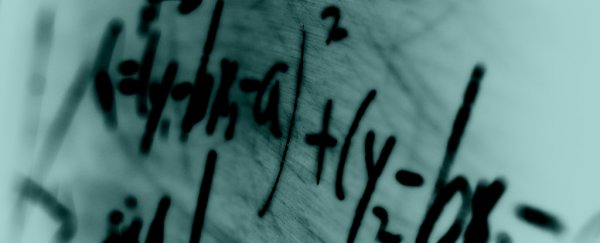His name is Shinichi Mochizuki, and depending on how fluent you are in the fringes of number theory, he's either a peerless mathematical visionary or a reclusive, inscrutable cryptologist. Maybe both.
A little over five years back, the celebrated Japanese mathematician unveiled a 500-page proof spread over four papers, which together purported to offer a revolutionary solution to what's called the abc conjecture – a gruelling math problem posed over 30 years ago.
There was only one problem. Nobody could understand what the heck Mochizuki was going on about.
The abc conjecture concerns the relationship between positive integers that satisfy the statement a + b = c, but which also allows a fourth variable, d, to represent the distinct prime factors of abc in certain specified circumstances.
The puzzle, which ties together elements of both number theory and arithmetic geometry, has never been conclusively solved by mathematicians.
Mochizuki's sprawling opus is thought to be the closest anyone has ever gotten to actually doing so – if only experts could wrap their head around what his proof actually means.
Mochizuki – who was once speculated to be another famous recluse, the fabled Bitcoin inventor, Satoshi Nakamoto – had crammed so much never-before-seen mathematical thinking into his 500-page argument that the world's math community didn't know what to make of it.
The solution – which Mochizuki calls "Inter-universal Teichmuller Theory" – took the mathematician over 10 years working in isolation to come up with, and even though researchers have had access to it since 2012, many mathematicians say they're still years away from deciphering what the papers actually mean.
To help them along, a number of international meetings of mathematicians have been convened to help explain how Inter-universal Teichmuller Theory works to other mathematical experts, and one of Mochizuki's colleagues at Kyoto University produced a more easily digestible (300-page) summary of the parent work.
Despite these kinds of efforts, commentators admitted as recently as last year that it would still be years before an academic consensus could be formed on whether the labyrinthian nightmare of a paper could actually be verified.
"The constructions are generally clear, and many of the arguments could be followed to some extent, but the overarching strategy remains totally elusive for me," mathematician Vesselin Dimitrov of Yale University told Nature in 2016.
"Add to this the heavy, unprecedentedly indigestible notation: these papers are unlike anything that has ever appeared in the mathematical literature."
But while the world's experts may want more time to review the work, it looks like that time has now run out.
According to a new report by Japanese newspaper The Asahi Shimbun, Mochizuki's revolutionary paper – which has been inviting peer review for well over five years now – could be published as soon as next January.
However, there's a pretty big question mark over the nature of its publication.
When it goes to print, the Inter-universal Teichmuller Theory is set to be published in the quarterly journal of Kyoto University's Research Institute for Mathematical Sciences (RIMS) – but Mochizuki is the editor-in-chief of the journal, which some suggest could be a conflict of interest.
"There has always been a rumour that the papers were submitted to a Japanese journal, which people were concerned would not give the papers enough scrutiny," mathematician Felipe Voloch from the University of Canterbury in New Zealand told New Scientist.
"For me, the fact that it has been accepted in this journal doesn't change much. I am still waiting for an explanation of the ideas that I can understand."
Others are decidedly more positive about the clarity and impact of the research.
"The methods Mochizuki used in his proof are innovative and groundbreaking," mathematician Nobushige Kurokawa from the Tokyo Institute of Technology told The Asahi Shimbun.
"It will become a powerful tool for the future of mathematics."
Still, with the inevitable publication deadline inching closer, it remains unclear just how the world's mathematicians will grapple with the dilemma of a published 'proof' that eludes common understanding, even after experts have been struggling for months or even years.
As Voloch commented in 2015 after attending one of the the Inter-universal Teichmuller Theory's explanatory sessions:
"At the afternoon tea break, everybody was confused. I asked many people and nobody had a clue."
